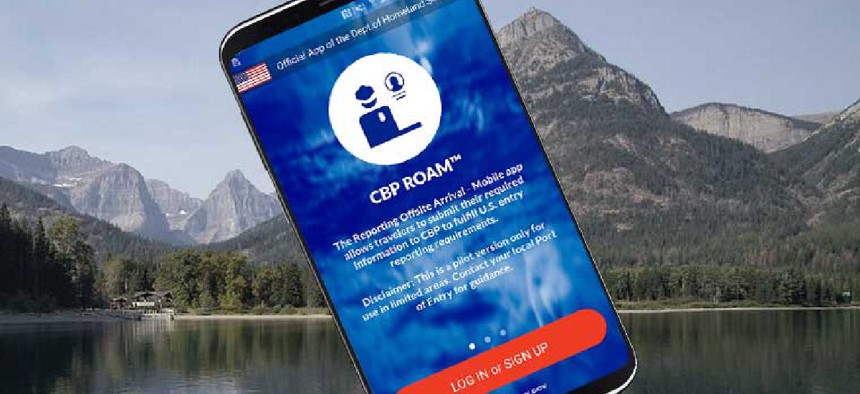CBP launches app for remote arrivals


Connecting state and local government leaders
Customs and Border Protection will roll out a smartphone app allowing travelers who cross into the U.S. in remote locations to use their mobile devices to interact with customs agents.
Customs and Border Protection's new mobile app will make it easier for agents to process travelers entering the country via hiking trails or pleasure boats.
The Reporting Offsite Arrival-Mobile (ROAM) app provides an option for travelers crossing the border to report their U.S. entry to CBP via their personal smartphone or a tablet located at local businesses.
To use the ROAM app, travelers submit their biographic, conveyance and trip details for review; CBP may initiate a video chat to further interview travelers. Once the CBP reviews the trip, travelers receive a push notification and an email with their admissibility decision and next steps, if applicable.
"Most travelers want to be compliant" with immigration law, and the app makes it easier to do that, said Christopher Wright, program manager for CBP's office of field operations--innovation.
Use of the app by travelers will free up agents to enforce immigration rules against travelers who don't want to comply, according to Wright. The app "is more a reallocation" of agents from compliance work to enforcement, he said.
The app works on LTE- or Wi-Fi-capable mobile devices and Wright said CBP has also partnered with Wi-Fi-equipped local businesses in remote areas where cell coverage is limited and set up kiosks at those businesses.
ROAM replaces CPB's Outlying Area Reporting Stations (OARS), which uses 90's era, one-way video transmission capabilities and speakerphones at remote marinas and docks. Those systems, according to the agency, are outdated and challenging to access.
In some instances in remote Minnesota lake country, for example, reporting via the old OARS system required boaters and hikers to go more than a dozen miles out of their way to reach a reporting station, Wright said.
He added that the new app has substantially reduced agents' and travelers' time on the phone. On some heavily travelled summer holiday weekends, reporting travelers could spend hours holding on the phone as they waited for an agent to come on the line to interview them. Using ROAM, he said, those calls now take only minutes because the app's user profiles provide personal data up front.
CBP launched the ROAM pilot program last August in Minnesota. The app is currently operational in the entire state of Florida, along the entire Great Lakes region from Montana eastward to New York and in limited areas in Louisiana near New Orleans.
It will become operational in Puerto Rico, the U.S. Virgin Islands and the entire eastern seaboard by the end of June, and it will be nationwide by the end of July, Wright said.
ROAM's latest expansion, announced on June 14, covers land and aquatic crossings between the Waterton International Peace Park in Alberta, Canada, to Goat Haunt, Mont., in Glacier National Park.
This article was first posted to FCW, a sibling site to GCN.




